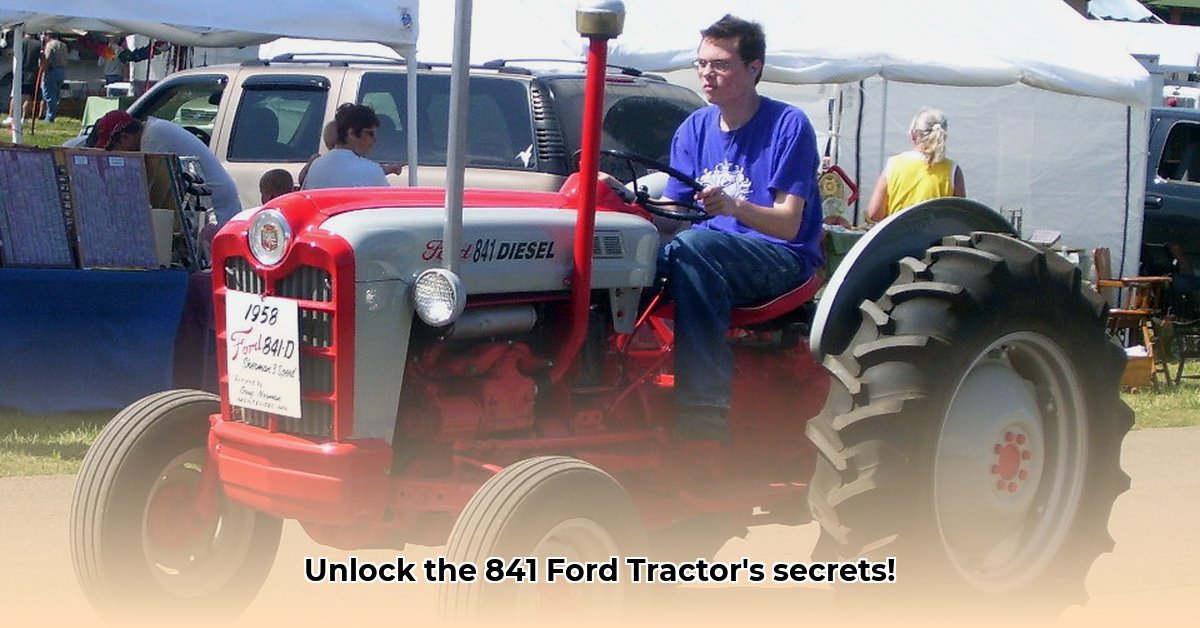
The Ford 841 Powermaster, a stalwart of the late 1950s agricultural landscape, represents more than just a tractor; it's a piece of American farming history. This comprehensive guide delves into its technical specifications, historical context, and practical restoration advice, catering to collectors, historians, and prospective owners alike. We'll uncover the intricacies of this iconic machine, from its diverse engine options to the challenges of restoring its robust build.
Technical Specifications: Understanding the 841's Capabilities
The Ford 841 Powermaster offered remarkable versatility for its time, boasting a range of engine and transmission options. Its 2.8-liter engine provided power in three fuel configurations: gasoline, liquid petroleum gas (LPG), and diesel. This flexibility was a significant advantage in a time of evolving fuel technologies and resource management. However, precise horsepower and torque figures vary across sources, likely due to differences in testing methodologies.
The table below summarizes the approximate specifications. Further research is needed to definitively resolve the discrepancies in historical data.
| Engine Type | Approximate Horsepower | Compression Ratio | Approximate Torque (lb-ft) |
|---|---|---|---|
| Gasoline | 37-40 | 7.5:1 | (Data Needed) |
| LP Gas | 35-38 | 8.65:1 | (Data Needed) |
| Diesel | 41-44 | 16.8:1 | (Data Needed) |
Transmission options included a standard 4-speed and an optional 12-speed, possibly a "Sherman Step-Up Step-Down" transmission, which broadened its operational capabilities. Other key specifications, requiring further investigation for complete accuracy, include PTO (power take-off) horsepower, hydraulic lift capacity, weight, dimensions, and fuel tank size. The variations across historical records underscore the importance of diligent research in documenting vintage machinery. Isn't it fascinating how much detail is needed to fully understand even a seemingly simple machine?
Historical Context: The 841 in its Time
Imagine the late 1950s: post-war prosperity fueling agricultural expansion, and the 841 Powermaster at the heart of it all. Manufactured between 1957 and 1961, the 841 marked a significant step forward in Ford's agricultural machinery line. Its design, while open and prioritizing function over modern comfort features (common for the era), reflects the technological advancements and limitations of its time. The inclusion of an LPG option is particularly noteworthy, showcasing an era's focus on fuel flexibility and resourcefulness. How did this fuel choice affect its usage and acceptance among farmers? Further historical research would provide valuable insights.
Restoration and Maintenance: A Practical Guide
Restoring a Ford 841 Powermaster demands patience and dedication. Parts acquisition presents a major challenge. Online forums dedicated to classic tractors, specialized parts dealers, and an active community of enthusiasts become invaluable resources. This is not a project for the faint of heart; it requires meticulous attention to detail and a significant investment of time and effort.
A practical restoration process involves these key steps:
- Assessment: Begin with a thorough examination, meticulously documenting the tractor's condition and identifying areas needing repair or replacement.
- Parts Sourcing: This stage requires considerable effort and persistence. Locate necessary parts through various channels.
- Disassembly: Carefully dismantle the tractor, cleaning each component thoroughly.
- Repair/Replacement: Repair or replace damaged or worn parts.
- Reassembly: Reassemble the tractor, adhering closely to the original design.
- Testing: After reassembly, test all systems to ensure smooth and reliable operation.
Conclusion: Legacy of the Ford 841 Powermaster
The Ford 841 Powermaster stands as a testament to American ingenuity and agricultural innovation. Its historical significance, combined with the challenges and rewards of restoration, ensures its enduring appeal to collectors and enthusiasts. While parts sourcing poses a considerable challenge, the sense of accomplishment in bringing this classic machine back to life is immeasurable. The 841 Powermaster is not merely machinery; it represents a tangible link to a significant period in agricultural history, a story worth preserving and sharing.